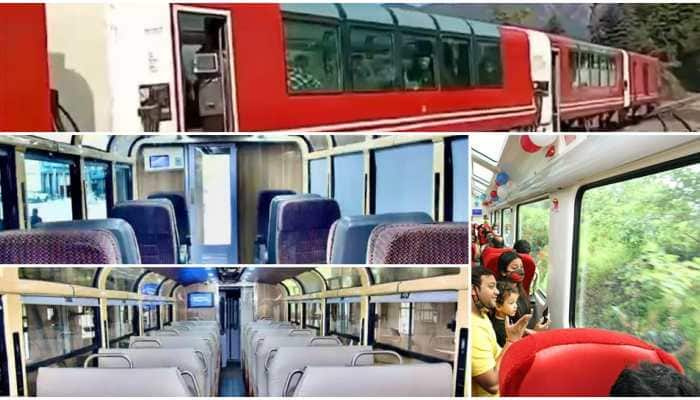Beijing vs New Delhi: A Tale of Two Cities And Their Air Pollution Challenges
Both Beijing and New Delhi have been struggling with severe air quality problems for years. However, while Beijing has improved its air quality significantly, New Delhi has not seen much progress.
Trending Photos
)
New Delhi: Delhi and Beijing are two of the most populous and polluted cities in the world. Both have been struggling with severe air quality problems for years, affecting the health and well-being of millions of people. However, while Beijing has managed to improve its air quality significantly in recent years, New Delhi has not seen much progress. What are the reasons for this difference, and what can Delhi learn from Beijing?
The Chinese capital on Saturday afternoon recorded an AQI of 73 that falls under the 'moderate category' while Delhi's AQI level was close to 350 in the 'very poor' category.
One of the main reasons for the disparity is the difference in the sources and composition of air pollution in the two cities. According to a study by the Energy Policy Institute at the University of Chicago, the main sources of air pollution in Beijing are coal combustion, industrial emissions, and vehicle exhaust.
These sources emit mainly sulfur dioxide (SO2), nitrogen oxides (NOx), and particulate matter (PM), which are harmful to human health and the environment. However, these pollutants can also be reduced by using cleaner fuels, installing emission control devices, and enforcing stricter standards.
On the other hand, the main sources of air pollution in New Delhi are biomass burning, road dust, and agricultural waste burning. These sources emit mainly carbon monoxide (CO), volatile organic compounds (VOCs), and PM, which are also harmful to human health and the environment. However, these pollutants are more difficult to control, as they are dispersed, seasonal, and often linked to socio-economic factors.
For instance, farmers in the neighboring states of Punjab and Haryana burn crop residues after harvesting, creating huge plumes of smoke that drift into New Delhi. This practice is driven by the lack of alternatives, incentives, and awareness among the farmers.
Another reason for the disparity is the difference in the political and institutional capacity and willingness to tackle air pollution in the two cities. Beijing has benefited from the strong and centralized leadership of the Chinese government, which has made air pollution a national priority and allocated substantial resources and authority to address it.
Beijing has also implemented a comprehensive and coordinated action plan, which includes measures such as shutting down or relocating polluting industries, switching from coal to natural gas for heating and power generation, expanding public transportation and electric vehicles, and imposing restrictions on traffic and construction activities.
On the other hand, New Delhi has faced challenges from the fragmented and decentralized governance structure of India, which has limited the scope and effectiveness of its air pollution policies. New Delhi has to coordinate with multiple state and central agencies, which often have conflicting interests and agendas.
New Delhi has also lacked a consistent and long-term action plan, which has resulted in ad hoc and reactive measures, such as banning firecrackers, odd-even vehicle rationing, and temporary closure of schools and factories. These measures have had limited impact and have not addressed the root causes of the problem.
Stay informed on all the latest news, real-time breaking news updates, and follow all the important headlines in india news and world News on Zee News.
Live Tv







)
)
)
)
)
)
)
)
)
)
